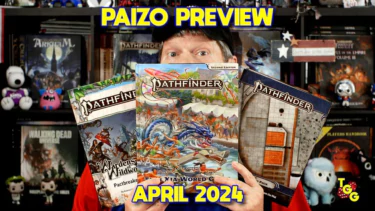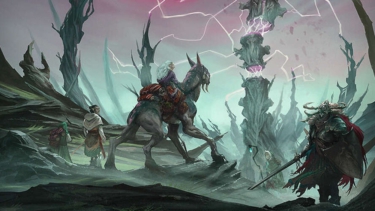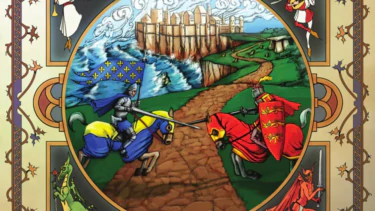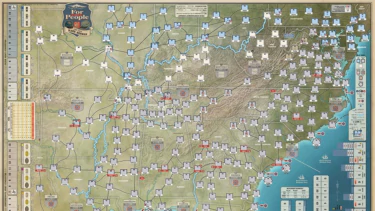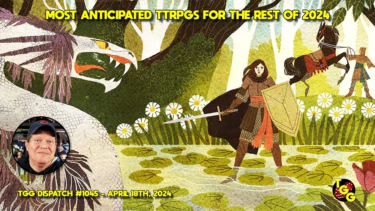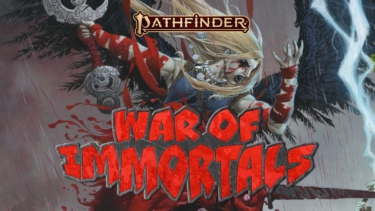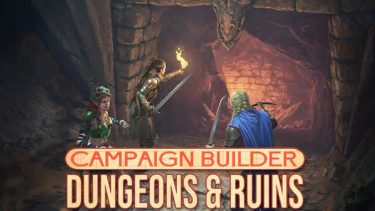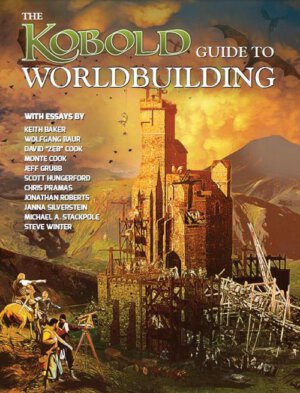
Publisher: Kobold Press
Authors: Keith Baker, Wolfgang Baur, David “Zeb” Cook, Monte Cook, Jeff Grubb, Scott Hungerford, Chris Pramas, Jonathan Roberts, Janna Silverstein, Michael A. Stackpole and Steve Winter
Year: 2013
Ages: 12+
Pages: 116 pages
Genre: Multi genre RPG help guide
Retail Price: $19.99 Print/PDF bundle, $12.99 PDF
From Kobold Press: “Roleplaying games and fantasy fiction are filled with rich and fascinating worlds: the Forgotten Realms, Glorantha, Narnia, R’lyeh, Middle-Earth, Barsoom, and so many more. It took startling leaps of imagination as well as careful thought and planning to create places like these: places that readers and players want to come back to again and again. Now, eleven of adventure gaming’s top designers come together to share their insights into building worlds that gamers will never forget. Learn the secrets of designing a pantheon, creating a setting that provokes conflict, determining which historical details are necessary, and so much more. Even take that creative leap—and create dazzling worlds of your own!”
“Ok class, let’s open our textbooks to page….” Sorry, just one of many flashbacks I got when reading portions of the Kobold Guide to Worldbuilding. At times, the information was so detailed it truly felt like I had stumbled back in time to my college days. And for all you wiseacres (yes, I said wiseacres), I didn’t go to college when football players wore leather helmets and we cheered from the sidelines in raccoon coats. Back to my comment about feeling like I was back in school: If I had to replace my college physics class with Worldbuilding 101, I would have definitely jumped at the chance! However, the Kobold Guide to Worldbuilding is not a light read. If you were expecting a book of charts and tables for worldbuilding, that’s not what this is at all.
I think the best place to start is to meet some of the professors…uh, I mean some of the authors. I won’t mention all of them but I will mention the ones whose credentials caught my eye:
- Keith Baker – Keith is best known for creating the D&D Eberron campaign setting.
- Wolfgang Bauer – Wolfgang is the founder of Kobold Press and has writing credits for D&D, Call of Cthulhu, and Pathfinder. He also edited Dragon Magazine, Dungeon Magazine, and Kobold Quarterly. Notably, he also created the Midgard setting.
- Monte Cook – C’mon, who hasn’t heard of Monte Cook? But for those who haven’t, he’s a prolific writer who is best known for D&D 3rd edition, Heroclix, Arcana Evolved, and Monte Cook’s World of Darkness.
- Jeff Grubb – Jeff is one of the co-founders of the Dragonlance setting and one of the co-creators of the Forgotten Realms setting.
- Chris Pramas – Chris’ credits include designing the Dragon Age RPG and Warhammer Fantasy Roleplay.
- Jonathan Roberts – I liked Jonathan’s bio the best. The guy grew up in a medieval farmhouse between a ruined castle and a bronze age fort! How sweet is that?! Jonathan is also a map illustrator whose clients range from Wizards of the Coast to George R. R. Martin.
These are just six of the eleven contributors to the Kobold Guide to Worldbuilding. As you can see, these folks know a thing or two about creating worlds. The reason I thought it important to discuss their bios an accomplishments is because when they speak, it’s worth our while to listen to their thoughts on worldbuilding.
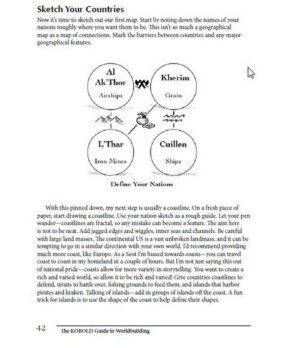
- “Introduction: Foster Worlds to Hide and Seek In” by Ken Scholes
- “What is Setting Design?” by Wolfgang Baur
- “Different Kinds of Worldbuilding” by Monte Cook
- “Worldbuilding Inside Out and Outside In” by Chris Pramas
- “How Real is Your World? On History and Setting” by Wolfgang Baur
- “Bringing History to Life” by Keith Baker
- Apocalpyso: Gaming After the Fall” by Jeff Grubb
- “Here Be Dragons: On Mapmaking” by Jonathan Roberts
- “How to Design a City-State, Tribe, or Nation” by Wolfgang Baur
- “They Do What, Now? On Creating Societies and Cultures” by Michael A. Stackpole
- “How to Make a High-Magic World” by Keith Baker
- “Worlds and Technology” by Wolfgang Baur
- “Why No Monotheism?” by Steve Winter
- “Designing a Pantheon” by Wolfgang Bauer
- “It’s a Mystery! Designing Mystery Cults” by David Cook
- “How to Design a Guild” by Wolfgang Baur
- “How to Write a World Bible” by Scott Hungerford
- “Playing in Someone Else’s Backyard” by Janna Silverstein
- “The Limits of Design: Kitchen Sink Design” by Wolfgang Baur
The introduction to this book starts:
“Like many of you, I’ve been visiting new worlds with an eye toward buying real estate for a long time now. My passport has more stamps than I can count.”
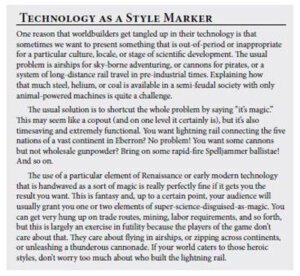
C’mon now, that’s a pretty good hook! Almost as good as “Call me Ishmael.” Scholes further notes “this volume brings together a fine set of tools, whether you’re a game master or an author.” I’d probably add the professional game designer is another target audience for these essays and that’s not just my opinion but this target group comes up frequently throughout several essays. Advice is given about how to design games and adventures and the various audiences who you may want to serve depending on your designs.
Every book touches each reader in a different way and what may catch my attention, may not catch yours. However, I thought I’d touch on some topics which gave me pause and caused me to nod my head in agreement or really got the gears turning on how I could incorporate these ideas into my own RPG worldbuilding.
Many worldbuilders, myself included, feel we have to build this huge backstory and history before we can even introduce players to our worlds. Wolfgang Baur notes:
“Partly, this is J.R.R. Tolkien’s fault for, in addition to giving us two great works of literary genius that redefined fantasy, he also gave us reams of backstory going back to the dawn of time.”
That’s exactly right! Darn you Tolkien for setting this bar so damned high! I tried that in my fledgling days of playing D&D and it’s a darn hard exercise in creativity not to mention the loads of work involved. The book’s authors echo today’s current sentiment about creating only the immediate world which the players will be exploring and leaving “blanks” in the geography and world history to fill in as you get to them. There’s no sense in creating a world your players may not ever explore unless, of course, that’s just your way of flexing your creativity.
Monte Cook discusses one way of building your world: collaboratively with your players. I like this concept a lot and it’s not just because I’m a lazy GM. But also because it allows your players to create a world they find interesting. When they’re vested in this collaboratively built world, they’ll keep coming back for more adventures in it.
In his ‘How Real is Your World’ essay, Wolfgang Baur notes:
“The closer we get to the present, the more we demand some adherence to reality. Fantasy retreats when the players know all too well what the world is really like, and especially when they may have visited some of the locations involved (or at least, seen them on TV).”
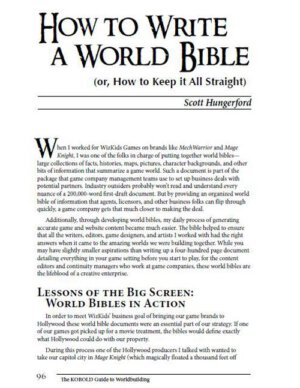
I thought Jonathan Roberts’ essay on creating maps was very interesting. You and I have both seen (and probably created) world maps which don’t have much rhyme or reason with regards to where villages are placed in relation to resources or whether there’s even a viable water supply nearby. We didn’t really care, right? This essay might make you care. If you follow Roberts’ direction, your map may even be used for the next HBO Game of Thrones episode. Well maybe not, but we can dream. At a minimum, our maps will be more clever and of better quality.
I could ramble on about all the great ideas I found but then it wouldn’t be fair to spoil all the fun for you, now would it? Besides, I’m pretty sure Kobold Press wants to sell copies of this tome and not have me give the ideas away for free.
Whether you read this book cover to cover or just read the essays which interest you, you’ll find plenty of ideas to use for building your own wonderful worlds. Let me warn you if you were looking for a book of tables to roll dice and generate worlds, this isn’t that kind of book at all. You’re going to have to work for it and actually read. (Gasp!) Perish the thought! And yes, like any book of essays or short stories, some parts of this book will drag and make you feel like you’re studying for a college exam; albeit a more fun college exam than any I took. Heck for that matter, maybe the Kobold Guide to Worldbuilding SHOULD be considered a textbook on intelligent setting creation.
- Hackers Gone Wild: A Review of ‘Ghosts in the Grid Rebooted’ - Jun 29, 2013
- The Truth is Out Where?: A Review of ‘Conspiracy X 2.0’ - Jun 13, 2013
- Dueling Memes: A Review of ‘Aliens vs. Zombies’ - Jun 1, 2013
TGG SCORE - 8.8
8.8
Whether you read this book cover to cover or just read the essays which interest you, you’ll find plenty of ideas to use for building your own wonderful worlds. Let me warn you if you were looking for a book of tables to roll dice and generate worlds, this isn’t that kind of book at all. You’re going to have to work for it and actually read.



